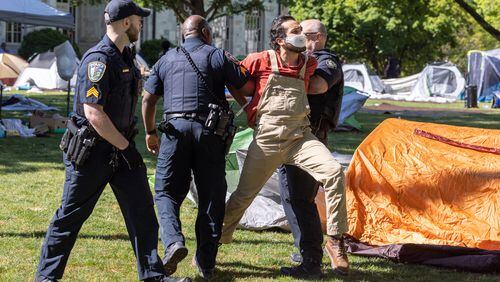There has been major growth in political activity on social networking sites since 2008.*
• The number of social networking site users has grown from 33% of the online users in 2008 to 69% of the users in 2012.
•In 2008, 11% of social networking site users said that they posted political news for others to read — that worked out to just 3% of all adults. In 2012, 28% of users, representing 17% of all adults, said they posted links to political stories or articles. And 33% of users, representing 19% of all adults, said they posted other types of political content.
•In 2008, 12% of social networking site users, representing 3% of all adults, said they had friended a political candidate on sites. In 2012, 20% of users, representing 12% of all adults, said they have friended or followed a candidate or political figure.
•In 2008, 13% of users, representing 3% of all adults, said they started or joined a group on a site organized around political or social issues. By 2012, the proportion of social networking site users who do this had risen to 21%, 12% of all adults.
•43% of social networking users say they have decided to learn more about a political or social issue because of something they read about on a social networking site.
•18% of users say they have decided to take action involving a political or social issue because of something they read on those sites.
*Source, Pew Research Center’s Internet & American Life Project
John McNeil walked out of prison a free man this year, months after the Georgia and North Carolina branches of the NAACP launched online campaigns to raise awareness about his questionable murder conviction.
McNeil was sentenced to life in prison when his self-defense claim did not hold up in a 2005 shooting at his Cobb County home. He served seven years, but had won an initial appeal for a new trial when the NAACP cranked up it’s campaign.
The district attorney reconsidered his case, and McNeil was released in February after pleading guilty to voluntary manslaughter.
The civil rights organization is one of many social and political organizations leveraging the public’s adoption of social media to help in their work. Liberal and conservative groups have latched onto mobile messaging, Twitter, Facebook and Tumblr to expand their reach, raise money, speed up their efforts, keep them instantly connected and spur change.
And it’s changing the way we act in our civic and political lives.
“It is much easier to generate and spread content that resonates with people and connects them behind the causes,” said Kim Garst, co-founder and CEO of Boom! Social, a corporate branding and social media consulting firm. “I think we will see more and more opportunities where social media advocacy will create opportunities for massive change; both good and bad.”
A recent Pew Research Center study on social media bears this out.
Aaron W. Smith, senior researcher for the Pew Research Center’s Internet & American Life Project, said social media has become more prominent as a place for political activity and discussion.
In the 2012 presidential campaign, Smith said, 39 percent of American adults did some sort of political activity on a social networking site. To put that in perspective, that’s more people than used these sites at all as recently as 2008.
“Not only are more people taking part in political activity on these sites, but those ‘political social media users’ tend to be very active in lots of different ways,” he said.
It used to be organizations were forced to rely on media coverage and “grass roots” initiatives to carry their messages and get people out. Today, they can mobilize large numbers of people with the click of a button.
John Staver of Woodstock, chairman of the Transportation Leadership Coalition and a former Tea Party activist, said Facebook and Twitter have been an integral of efforts to raise awareness about everything from transportation legislation to the Common Core performance standards for education that are being questioned in Georgia.
He was active in the campaign last year to defeat the vote for the Transportation Special Local Option Sales Tax.
“It’s so effective we’re putting together teams of people just to focus on Facebook and Twitter,” Staver said. “It helps spread the message like wildfire.”
In McNeil’s case, the NAACP blended offline grassroots organizing with online activism to raise awareness about the case. It garnered about 50,000 signatures for an online petition presented to Georgia Attorney General Sam Olens.
According to Eric Wingerter, NAACP vice president of communications and digital media, the organization has about 180,000 followers on Facebook, and more than 40,000 on Twitter. It has a Tumbler-based website called NAACPConnect that links youth members to adult mentors, and it has a growing presence on Foursquare and Instagram.
“Social media isn’t just a way for us to communicate with our members,” Wingerter said. “We have had great success using it as a tool to solicit feedback from our members as well. It’s been gratifying to see how much more powerful we can be when we overlay our online and offline strategies.”
He said social media also played a big role in the organizations efforts to shore up the vote during the 2012 presidential election.
“In some regions we even were able to message people waiting in long voting lines to keep their spirits up and not give up,” he said. “In a year when the conventional wisdom was that black voter turnout would be lower than average, we actually broke all previous records.”
Asked why so many Americans, particularly youth, gravitate toward social media to express their beliefs, Garst said part of the answer is accessibility.
“I read recently that nearly three out of five children ages 13-17 have a smart phone,” she said. “All of the major social media sites have mobile apps, so that gives those who own them immediate access. You can feel something and express it to the world instantly.”






